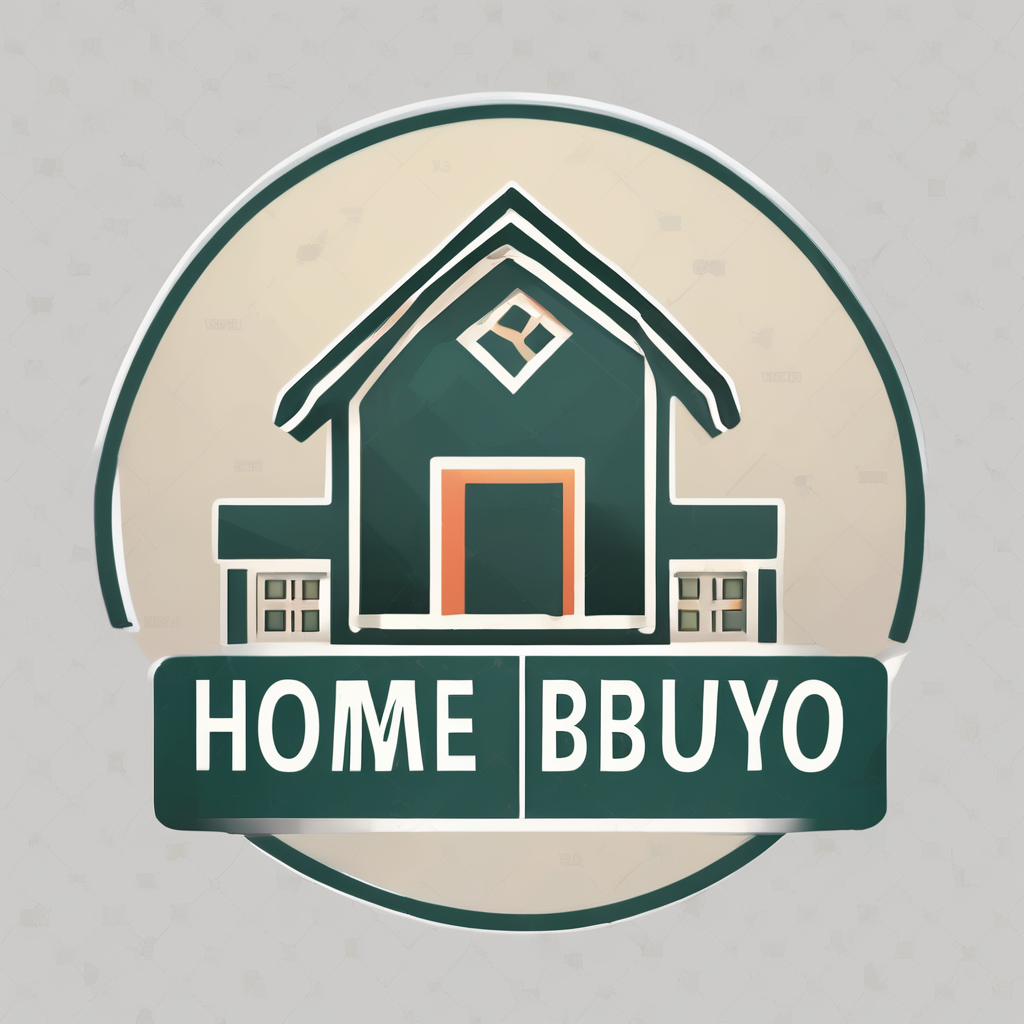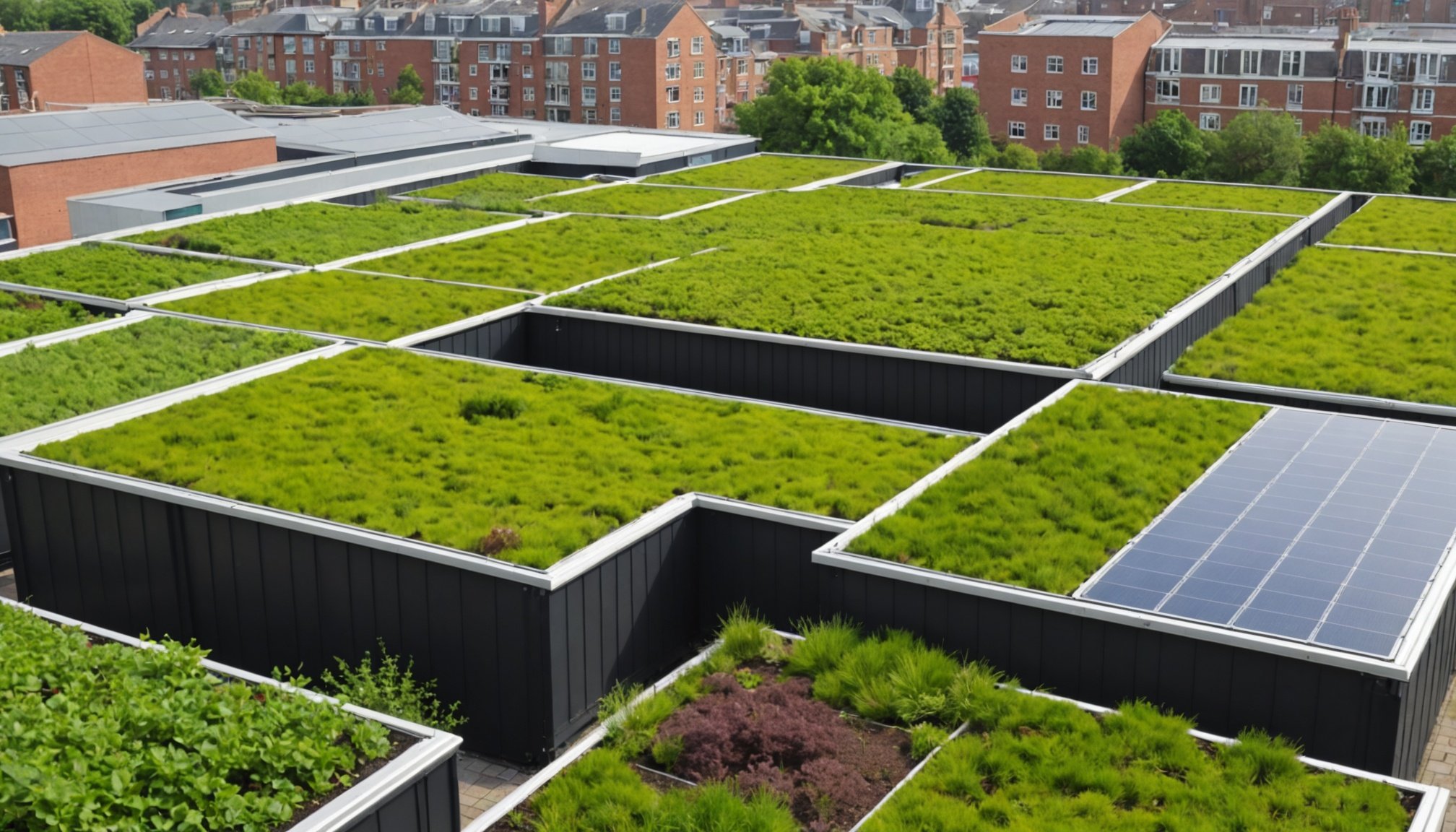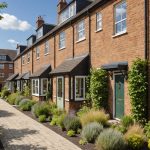Overview of Green Roofs and Their Benefits
Green roofs, also known as vegetative roofs, provide a myriad of advantages. They are designed with layers that typically include a waterproof membrane, growing medium, and vegetation layer. These roofs are categorized into two types: extensive and intensive. Extensive green roofs are lightweight and low-maintenance, characterized by shallow substrates and drought-resistant plants. In contrast, intensive green roofs are deeper and support a more diverse range of plant species, including trees and shrubs, requiring more maintenance and structural support.
The benefits of green roofs extend beyond aesthetics. From an environmental standpoint, they enhance biodiversity by providing habitats for various species. They also improve energy efficiency by acting as natural insulation, which helps to reduce heating and cooling costs in buildings. This natural insulation capability means that less energy is required for temperature regulation, curbing the dependency on fossil fuels and therefore reducing carbon footprint.
In parallel : How the Digital Nomad Movement is Transforming Brighton’s Short-Term Rental Scene
Additionally, green roofs contribute to improving air quality and managing stormwater runoff. They absorb rainwater, reducing water runoff and decreasing the burden on drainage systems during heavy rainfall, while also filtering pollutants and carbon dioxide from the air. This efficiency showcases how green roofs can play a pivotal role in urban sustainability efforts.
Insurance Types for Green Roof Properties
Green roof properties present unique needs when it comes to property insurance. For standard properties, typical building insurance policies cover structural damages caused by unforeseen events such as fires or hurricanes. However, these policies may not automatically cover green roof components like vegetation or unique drainage systems.
Also to see : Transforming Property Showcase: Leveraging Virtual Reality for Elevating Real Estate Listings in Liverpool
Tailored Insurance Options
To bridge this gap, additional specialized coverage options become essential. Some homeowners insurance policies allow custom extensions that specifically cover the materials and systems integral to green roofs. These can include plant maintenance, waterproofing membranes, and even specific issues related to stormwater management. Opting for these extensions ensures comprehensive protection tailored specifically to the property’s needs.
Consulting Professionals
Given the complexities involved, consulting with an insurance broker well-versed in specialized coverage is crucial. They can offer insights into coverage options that best suit the particular requirements of green roofs. Efficiently safeguarding green-roofed properties involves analyzing whether the current homeowners insurance adequately covers potential risks or if additional specified coverage is necessary.
In sum, while standard property insurance covers general risks, green roofs necessitate more specialized attention. Through proper consultation and selection of appropriate policies, homeowners can ensure that every part of their property, from the foundation to the rooftop ecosystem, is well-protected.
Identifying Risks Associated with Green Roofs
Exploring the risks associated with green roofs is crucial for effective risk assessment. One of the predominant concerns is the possibility of leaks and structural stress. Green roofs are dynamic ecosystems requiring optimal conditions to thrive. Failure to maintain structural integrity can result in water infiltration problems, leading to potential property damage. Regular inspections and updates to waterproofing measures can mitigate these risks.
The maintenance requirements for green roofs are high due to the need to ensure proper drainage, irrigation, and vegetation health. Neglecting maintenance can exacerbate problems like soil erosion and plant overgrowth, increasing the likelihood of insurance claims over time. Homeowners must commit to a thorough maintenance plan that addresses these potential pitfalls to avoid significant repair costs.
In addition to regular upkeep, the impact of extreme weather events should be considered. Green roofs face unique challenges during harsh weather, such as heavy rainfall or snow accumulation, which can stress the roof structure. Properly assessing the resilience of materials used and conducting regular checks can effectively minimize these weather impacts. By understanding these risks, property owners can take informed steps to safeguard their investments and maintain the benefits green roofs offer.
Relevant UK Regulations Affecting Insurance
In the UK, various regulations play a crucial role in shaping insurance considerations for property owners. Understanding these regulations can help navigate potential challenges and ensure compliance.
Planning Permissions and Regulations
Planning permissions are essential for projects like green roof installations. Typically, property owners need consent from local authorities, ensuring their project meets local guidelines. Such permissions are crucial not just for construction legality, but also for aligning with insurance policies. Without the appropriate authorisation, claims related to these installations might be denied.
Building Codes for Insurance Compliance
When it comes to building codes, adherence is vital. These codes set the standards for construction safety and resilience. For insurance purposes, compliance is a safeguard against potential risks, demonstrating that a structure is built to withstand specific environmental conditions. Insurance companies rely on such compliance to evaluate risk and determine premium rates.
Environmental Policies and Risk Reduction
Environmental policies are increasingly significant in the insurance sector. These policies often focus on sustainable practices and ecological considerations, impacting everything from property design to energy use. By adhering to such policies, property owners can not only contribute to environmental conservation but also benefit from reduced risks, which may lead to more favourable insurance terms.
Case Studies: Insurance Claims Involving Green Roofs
Understanding the intricacies of insurance claims related to green roofs is essential for property owners and insurers alike. Various case studies have come to light, serving as real-world examples of how green roof insurance claims unfold. These cases provide a detailed insight into both successful and unsuccessful claim outcomes, offering valuable lessons learned.
In one notable instance, a residential building sustained damage due to water infiltration from its green roof. The insurance claim was initially denied, citing poor maintenance. However, on further inspection and after reviewing maintenance logs, the decision was overturned, resulting in a successful claim. This example underscores the importance of meticulous record-keeping in influencing claim outcomes.
Another case involved a commercial property where a storm caused damage to a newly installed green roof. Here, the claim was promptly accepted due to comprehensive weather protection clauses in the policy. This highlights the advantage of having well-defined insurance coverage.
These real-world examples not only illustrate the outcomes but also guide future insurance considerations. They emphasize the necessity for clear communication between property owners and insurers, as well as the inclusion of specific green roof-related clauses in insurance policies. Such measures can preemptively address potential disputes and ensure smoother claim processes.
Expert Tips for Property Owners with Green Roofs
Implementing best practices is vital for property management when it comes to green roofs. Firstly, ensure proper landscape design specific to your environmental conditions. Regular inspections for leaks or drainage issues are crucial to maintaining safety and longevity. Addressing problems early not only prolongs roof life but also enhances building integrity.
Insurance strategies for green roofs start with actively communicating with insurers. Provide detailed descriptions of your green roof design, materials, and maintenance plans. Demonstrating best practices boosts your case for adequate coverage. It’s advisable to document all maintenance activities, from irrigation systems to plant selection, to be shared with your insurer.
Engaging an expert in property management not only promotes a healthy roof ecosystem but ensures your green roof aligns with your insurance requirements. Expert advice can guide you on which plants are more resilient to local weather and contribute less to roof weight load.
Moreover, establishing regular dialogues with your insurer can forestall misunderstandings concerning coverage. Consider setting up regular reviews of your policy with them to adjust any changes in maintenance needs or modifications to the roof itself. Following these strategies and expert advice secures both your investment and peace of mind, ensuring lasting success with your green roof.











